Deborah Martin & Cheryl Gallagher’s hope is that these musical impressions will take you, the listener, on the same imaginative and magical journey to Tibet that they experienced.

Rich symphonic sounds and rhythmic structures
In 1999 Deborah Martin & Cheryl Gallagher took a trip to Tibet to experience, first hand, the majesty, beauty and spirit of the “Land above the clouds.” Tibet has some of the world’s tallest mountains, Mount Everest is located on the border with Nepal, every mountain has a god guarding it and these gods differ, inspiring sound-spaces reflective of mystical vibrations. Deborah Martin & Cheryl Gallagher’s hope is that these musical impressions will take you, the listener, on the same imaginative and magical journey to Tibet that they experienced.
From the liner notes, originally released January 1, 2004: “Tibet is known as the land above the clouds. The album Tibet is a richly textured and highly emotive musical sojourn that takes the listener on a journey that is perfect for meditation, contemplation, deep listening and spiritual thought and practice. Deborah Martin and Cheryl Gallagher have composed a work of beauty and majesty mixing traditional Tibetan percussion and taos drums, harps and electronics with samples of authentic Tibetan prayers intoned by residents of this ruggedly awe inspiring country.”
Instrumentally, what you will hear is Deborah Martin on electronics and samples, Tibetan bells, bowls, drums, cymbals, ceremonial conch shell, Taos drums, various ethnic hand percussion and sound environs, with Cheryl Gallagher on electronics and samples, Camac electric harp, acoustic grand harp, various ethnic hand percussion, also Howard Givens on selective electronics and ambient guitar textures on “Glacier” and “Procession,” Mark Hunton on flute in the track “Procession,” as well as the location sound recordings, Mark Rownd on Taos drum on “Glacier,” and David Helpling on the African drum known as the djembe in “Seeker and Sought.” All recordings of Sherpas and Tibetan monks and nuns were recorded on site at various locations throughout Tibet and Nepal.
The name of the djembe comes from the saying “Anke djé, anke bé” which translates to “everyone gather together in peace” and defines the drum’s purpose. A djembe is a rope-tuned skin-covered goblet drum played with bare hands, originally from the Bambara people in Mali, West Africa.
Taking this all to the next level, to truly recapture the essence of this project, Immersive Audio mix engineer Todd Boston had to painstakingly reconstruct each track, hand percussion, shakers, drums, bowls, harp, synth elements, live recordings, atmospherics, and remix the work for the Atmos immersive space. A stereo remaster was then completed finalizing the total audio presentation.
Immersive audio is an emerging technology that allows a multi-dimensional approach to audio storytelling. By utilizing new audio production tools award winning audio producer Todd Boston at Spatial Sound Studios can bring these new sounds to listeners in an expanded sonic field that goes beyond traditional surround sound, and you can hear it using ordinary headphones or earbuds. While “surround sound” exists in a horizontal plane around the listener, “immersive audio” is designed to produce a fully immersive experience where audio is perceived as coming from all around you including the dimension of space above. What I heard was that amazing sense of location as well as very unique layering, all around.
This new sense of sonic place is awesome. Deborah states, “In listening to the remastered and Immersive Audio versions of this very special and deeply personal project, I realized that the music not only transported me back to the land and peoples, but it instilled in me the fact that I never really left. It is still a part of who I am now and will always remain.”
Cheryl Gallagher reflects, “While enveloped in the rich flowing textures of each track’s deep Immersive Audio soundfield, listening to those authentically powerful drums brought back to life, those sweet and steady devotional voices manifesting out of the ethers of the past, listening to this album TIBET – 20th Anniversary Remaster re-engineered into compelling multidimensional forms became a truly transcendental experience. Hearing that otherworldly music after so many years, I was brought to poignant tears with rolling waves of awakened memory, as if an intricate Tibetan sand mandala blown away 20 years ago reassembled before me. (Best. Flashbacks. Ever!)”
My submersive sonic rides into the gigantic mountain landscapes of Tibet have consistently left me in awe, savoring the weaving ornate tapestries, each of the individual instruments appear to be isolated in darkness so that these tiny details become bigger, all heard through these newly enhanced 3D ears. Tibet’s Mount Everest has long been revered by local peoples. Its most common Tibetan name, Chomolungma, means “Goddess Mother of the World” or “Goddess of the Valley.” The Sanskrit name Sagarmatha means literally “Peak of Heaven.” Thus, each song tells a new story from the journey, there are enchanting voices, a striking orchestral mix from Tibet and symphonic synth with hand percussion, so very fluid, and atmospheric electronics, a very rich fiesta of imagery taking place in a whole new way.
Emerging majestically, “Palace” (7:43), the title makes me think of the old perfect buildings unique to the region, dreaming of just being in the palace, the place of the people, and feeling that sense of architecture and history. Such large residential buildings with multiple windows that are constructed to let in the best sunlight and built on elevated, sunny sites facing the south, and are often made out of a mixture of rocks, wood, cement and earth. I hear a spinning box of jewels bright against the darkness, the tempo locks in and builds into a gigantic ancient structure, we are going into the palace, there are the people chanting, the drummers, the regal horns, a blasting bass with gongs and frame drums, lots of instruments rotating colors and patterns weaving and transitioning.
On winds and a teasing celestial choir ::
After a warm fade in, on winds and a teasing celestial choir, the track “Glacier” (6:51) travels, the tempo settles into the pace of camels walking on and on in a line on an ice trail, always getting more interesting, bringing new instruments and new variations in the repetitive patterns. Mark Rownd can be heard on Taos drum and Howard Givens on selective electronics and ambient guitar textures. Under a mountain sky, glaciers are mostly ice and very old, the procession of ceremonial dancers and the spirit of cold, here we all know that the glaciers are melting again.
With horns glowing awake from the universal silence into long tones from huge horns, “Morning in Tibet” (5:24) there is a calm, strong sense of hope and confidence. Imagine the mountains catching the sun’s rays slowly awakening the heavenly host in the sky above. Do I hear the whole village singing? Perhaps just for a moment, within new textures and unique instruments, a new tempo takes us even higher, soaring into a haunting gamelon beat.
Now to fade in, we are in a cave with water, mostly silence with tiny noises. This is the “Essence” (7:12), opening into a rising glow and clear dripping water, the synth glow takes over, sustained tones are blending in different ways with rattling things out in the distance, while the dawn keeps going with brighter drones, they hold there and then slowly fade, to be rekindled and expanding again, harps and tiny metal chimes, wispy winds on the ocean and an electric organ sunrise, slowly building into the big echoey floating fade out.
We are in a quiet cave of darkness, fade in a drone and chaos wind, “Seeker and Sought” (7:04), featuring David Helpling on Djembe. The djembe can produce a wide variety of sounds, making it an extremely versatile drum. The drum can be very loud, allowing it to be heard clearly as a solo instrument over a large percussion ensemble, which also adds to the more subtle textures. Now the women are chanting while the tones shift and bang together from time to time, we are floating in beams of shadow colors, the tempo takes form and we are moving at a steady pace now getting slightly faster. The djembe keeps things going during a momentary pause, now the atmosphere has coasted to a slow stop and the chanting voices and chimes merge, until the wind is all that remains.
Departing with a soft slow moment that fades in, glowing synth tones get stronger as we are “Leaving Shigatze” (5:12). In the physical world, it takes about three hours to travel between Lhasa and Shigatse by train. Lhasa contains a number of significant temples and monasteries, including Jokhang and Ramoche Temple. It is possible to get back to Lhasa within the same day by train. Musically, the distance is mere magical minutes, we have another dawn and new lands to see, with the ancient drums speaking of a living tradition, building a steady complex tempo against a harp. This becomes a regal procession, everyone moving in a slow deliberate pace and manner, a succession of interesting sounds mixing symphonically with exotic traditional instruments, bringing something new every few steps as the procession proceeds.
There is a mountain village, “Eklabatti” (6:16) a settlement in Nepal, the music starts building from the spooky windy place into a new awakening, following a path that traces riverbanks into oak, birch, and pine hills, past villages and a popular Hindu temple. At first I hear a flute calling in the night, another is answering, the wind picks up and the feeling is very slow and calming, perhaps the darkness is slowly lifting. We proceed, step by step, a camel caravan drum beat, they are getting closer. In the end, the winds blow but the darkness does not lift, the atmosphere is calm and respectful.
With Mark Hunton and Howard Givens, the concluding track opens as the winds fade in, becoming roaring mountain winds, “Procession” (10:11) brings together drums bells big horns, at times all making sound together, some places are quite ruckus, parts offer a succession of people doing different chants, some with urgency and some blankfaced at other times. Tibetian vultures are imagined, perhaps that is what I am hearing, tones drone and expand while the action calls and flaps about. At other times I might hear some sounds of Tibetan cowboys herding animals in the mountains, calling and whistling mixed in with the warming synth, subtle classical guitar trills and proud electronic flute layers, we are descending the mountain in full glory and the women are chanting rapidly, the people are chanting again, speaking together in a mindful cadence, I have no idea what they are saying. There are shifting columns of tones layering into a quilt of sunset colors, a man chanting prayers becomes a procession of voices, until the strange struggling calls fade out.
Deborah Martin pursues her passion of exploring the depths of thematic composition through the process of creative layering of structured studio recorded compositions and live recordings of instruments, blending them into a world of ambient electronic expression. Her music sensibilities enable her to combine scenic melodies, rich symphonic sounds and rhythmic structures to recreate the delicate balance of life in its many surroundings. Deborah’s Spotted Peccary releases include Under the Moon (20th Anniversary Remastered), Deep Roots Hidden Water (2010), Ancient Power (with Steve Gordon, 1998), Convergence (with Greg Klamt & Mark Rownd, 2002), Anno Domini (with J. Arif Verner, 2007), Between Worlds (Erik Wøllo, 2009), Etched Into Memory EP (2016), Eye of the Wizard (2015), Hemispherica Portalis (Portal of 1000 Years) (with Dean De Benedictis as Desensitized, 2020), The Silence Of Grace (with Jill Haley, 2021), Chaos In Premonition [Firestimo Mutato] (with Dean De Benedictis as Desensitized, 2022), and Kinishba (2024).
Cheryl Gallagher, also known in the art and music worlds as Madhavi Devi, is a distinguished electronic musician, harpist, and visual artist whose work spans across several creative domains. Her artistic journey is deeply rooted in the fusion of sound and spirituality, producing an expansive body of work that resonates with themes of inner growth, meditative atmospheres, and cosmic exploration. Madhavi Devi’s music is characterized by its deep, ambient soundscapes that blend electronic and acoustic elements. Her compositions often incorporate the ethereal tones of the harp, layered with electronic synthesizers, to create immersive sonic environments that invite listeners into states of reflection and spiritual connection. Based in Austin, Texas, Madhavi Devi remains an influential figure in the ambient music and visual arts scenes. Her work continues to inspire and challenge audiences to explore deeper dimensions of consciousness and being through mediums of sound and sight. Cheryl’s releases on Spotted Peccary include TIBET – 20th Anniversary Remaster (with Deborah Martin, 2024), Source of Compassion (with Howard Givens, 2016), The Truth of Being (2018), Precipice of a Dream (with Howard Givens and Craig Padilla, 2021) and The Celestial Expanse (with Howard Givens, 2022). For more information and to explore her extensive body of creative work, visit www.madhavidevi.com.
TIBET – 20th Anniversary Remaster brings to you a whole new listening experience. Using the Atmos technology your favorite headphones or earbuds allow you to take this journey to the Tibetan Plateau in the western part of East Asia, with gigantic mountain landscapes, nature sounds, various acoustic percussive elements, and subtly crafted electronic sub-components, enchanting voices, striking instrumentation, a refreshing orchestral mix with links between present and past, hand percussion and electronic ambient guitar textures.
TIBET (20th Anniversary Remaster) is available on Spotted Peccary Music. [Bandcamp | Site]







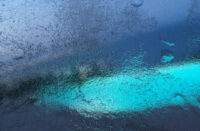




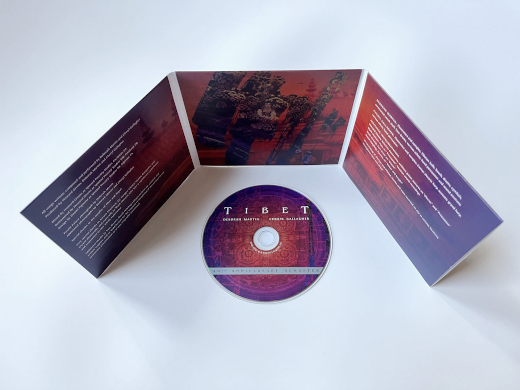
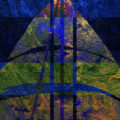

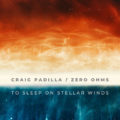
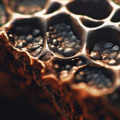
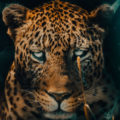
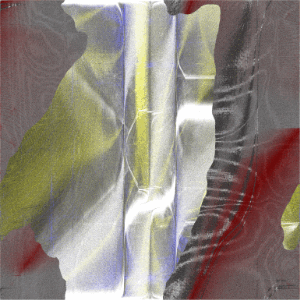

![Pole :: Tempus Remixes (Mute) — [concise]](https://igloomag.com/wp/wp-content/uploads/2025/04/pole-tempus-remixes_feat-75x75.jpg)






![Hasbeen :: Bunker Symphonies II (Clean Error) — [concise]](https://igloomag.com/wp/wp-content/uploads/2025/04/hasbeen-bunker-symphonies-ii_feat-75x75.jpg)

